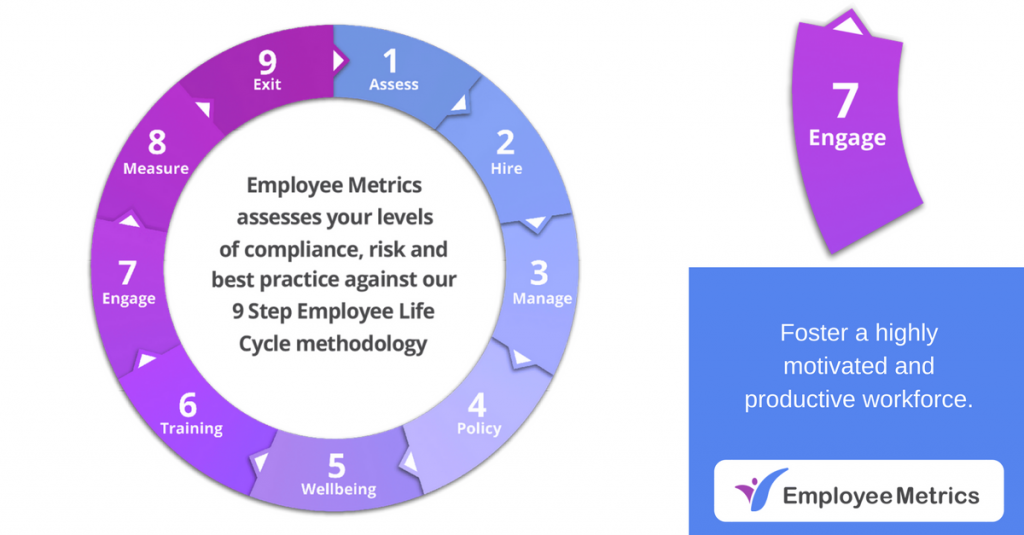If you are new to our Employee Life Cycle series, click here to go back and begin at Step 1 Assess, or read on for Step 7 Engage.
Gallup: 24% of Australian employees are engaged at work
According to Gallup’s 142 country study on the State of the Global Workplace tracking, only 24% of employees in Australia are engaged – meaning they are involved in, enthusiastic about and innovating in their work and workplace.
That means, unfortunately, 60% of Australian employees are “not engaged”, meaning they lack motivation and are less likely to invest discretionary effort in organisational goals or outcomes. An an additional 16% are “actively disengaged”, indicating they are unhappy and unproductive at work and liable to spread negativity to co-workers.
Business leaders must raise the bar on employee engagement.
The role of leadership is paramount in driving employee engagement. Leaders need to educate and motivate their workforce to ensure employees are personally committed. This means ensuring all employees understand what engagement is and what each person’s responsibility and role in creating and maintaining an engaged workplace is.
Employee engagement is a headline issue throughout business and HR.
Building a compelling and meaningful workplace environment is a complex process.That’s why the more successful organisations have some of the most stringent recruiting policies. The statistics are staggering and show just what an impact culture and engagement has; one study found applicants who were a cultural fit, would accept a 7% lower salary, whilst departments with good cultural alignment had 30% less turnover.
Meaningful engagement
It is important that the culture of an organisation be infused with meaning. Studies show that people who have a sense of purpose are more focused, creative, and resilient. A recent study by economists at the University of Warwick found that happiness led to a 12% spike in productivity, while unhappy workers, on average, proved to be 10% less productive.
Effective engagement is good for business
Employee Metrics can assess and evaluate the key dimensions of workplace engagement practices to lift culture, reward and recognition, leadership and communication throughout an organisation.
Step 7 Engage: Foster a highly motivated and productive workforce.
Employee Metrics diagnostic platform walks you through a detailed assessment, supported by an experienced HR Consultant. It generates a detailed report of your position across the 9 steps of the Employee Life Cycle.
Watch out for next week’s Employee Metrics article;
Step 8 Measure: Obtain an accurate view of your employee and vacancy costs.
